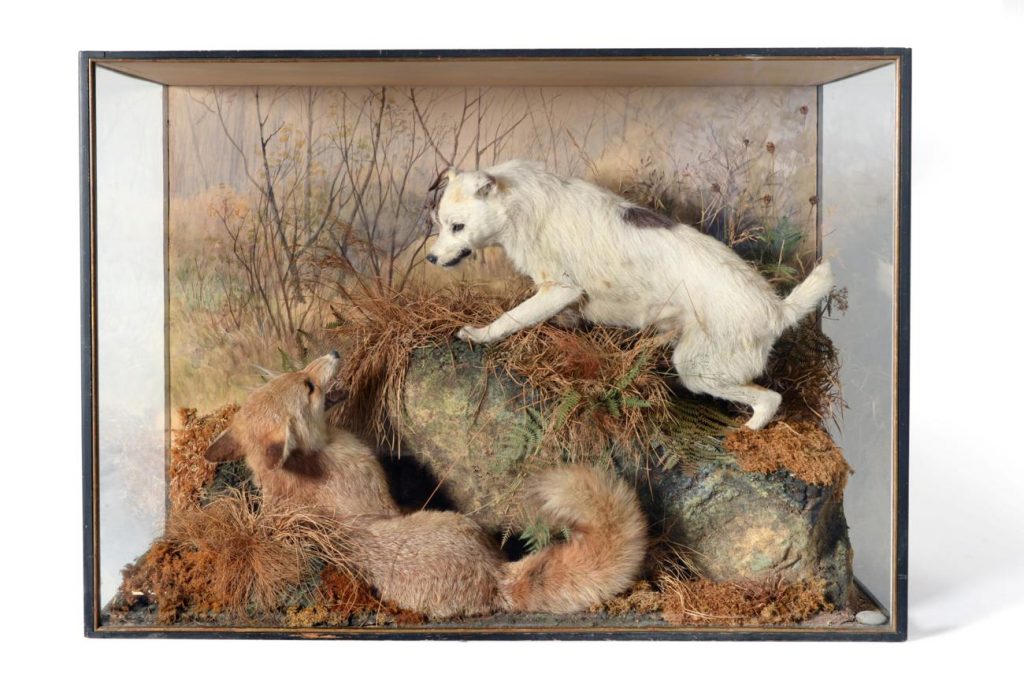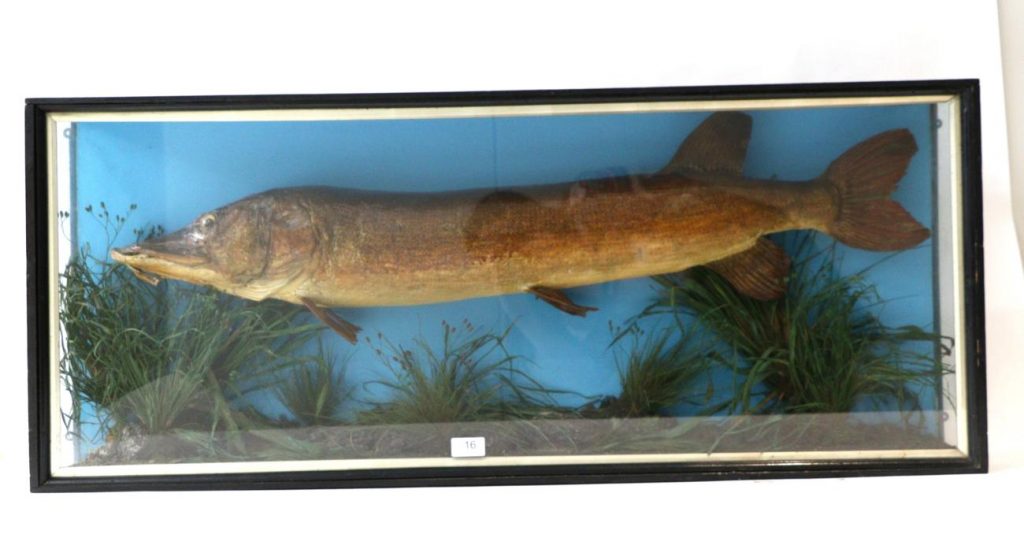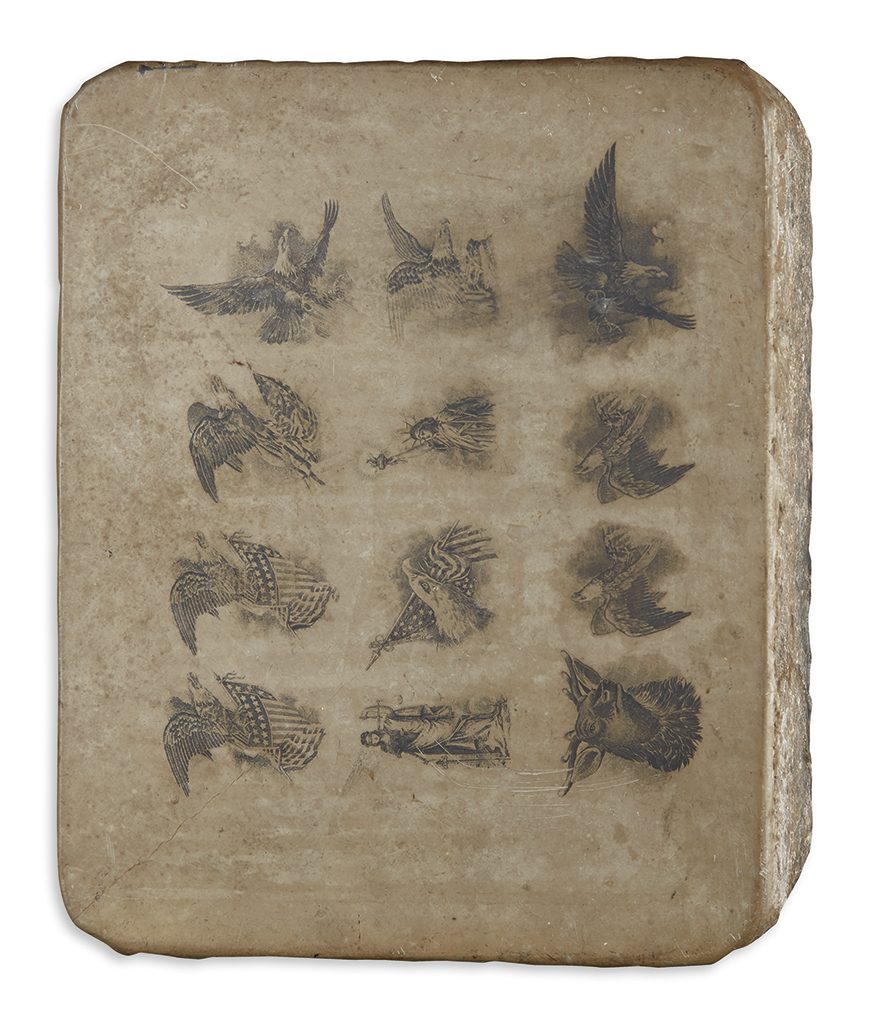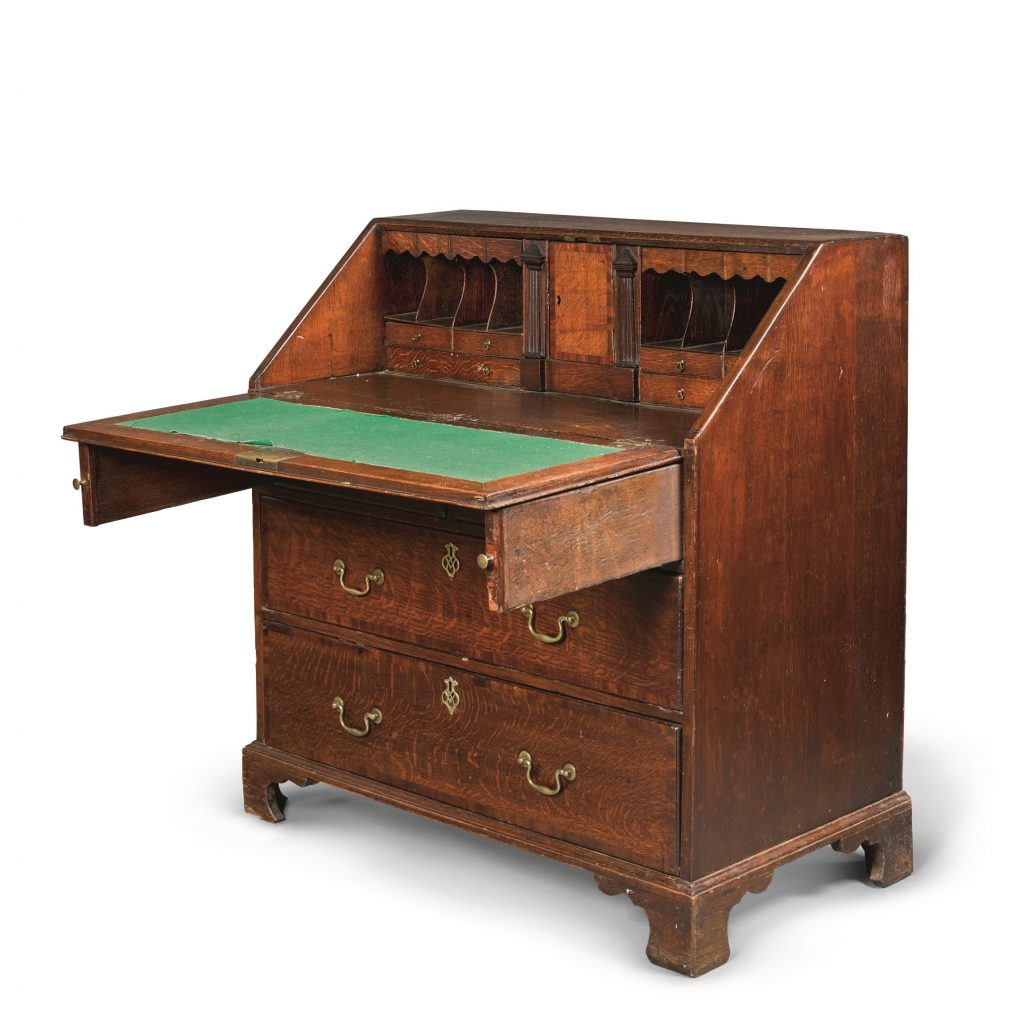A diorama, a lithographer's stone, and W.B. Yeats' desk
Curious objects at auction
Lot 1: Fox & Friend
Nothing says I’m sorry I accidentally killed your dog like presenting its owner with a sizeable diorama featuring the pooch’s stuffed remains. That’s the legend behind this circa 1900 case containing a fox terrier and its prey set against a woodland watercolor and faux ferns. The terrier had belonged to Henry Allison, a tenant farmer on the Skelton Castle Estate in northeast England. One day his boss, Squire William Wharton, was out hunting when his horse somehow trampled the dog. According to the Yorkshire auction house offering this melancholy item, “Such was the Squire’s remorse, that he had the case commissioned for Allison, as a gift to remember his terrier by.” How kind.
An auction estimate of $2,500-4,000 reflects the fact that this diorama was made by one of the “great British taxidermists,” Peter Spicer, known for his realistic backdrops and artistic styling. The entire sale on September 20 is heavy on taxidermy, including heads of wildebeests and warthogs, trays of mounted butterflies, and this pickled pike, crammed into a glass coffin and staring us down.


Courtesy of Tennants Auctioneers
![]()
Lot 2: 28 Pounds of Patriotism
Twelve little images adorn one side of this slab of stone measuring 9” x 11” x 3” and weighing 28 pounds. We see several variations of eagles and flags, even the Statue of Liberty. But this isn’t some primitive piece of patriotic décor, it’s a lithographer’s stone, used to print illustrated stationery sometime around 1925. Before laser printing, before inkjet, before mimeograph, there was lithography. Look it up.
This heavyweight goes to auction in New York on September 28. For only a few hundred dollars, you can purchase the foundation of your artisanal printing boutique and bring back fancy letterhead!

Courtesy of Swann Galleries
![]() Lot 3: From the Desk of…
Lot 3: From the Desk of…
Recall those 8 famous writers’ desks you could have owned but missed out on? Well, here’s another chance: on September 27, the desk of Noble Prize-winning Irish poet William Butler Yeats will cross the auction block in London. (Also his chair, his dining room table, his hairbrushes, his love letters, etc.)
Strangely, Sotheby’s does not indicate what this eighteenth-century desk is made of—best guess: mahogany. It is a secretary, or bureau if you wish, with a hinged writing surface, eight pigeonholes, seven small drawers, four concealed compartments, and perhaps one long-lost manuscript?
The auctioneer expects something in the neighborhood of $30,000-40,000 for the desk it says “was used regularly by Yeats for his correspondence in his later years, and possibly for an extended period after his move back to Ireland during the momentous period of the Irish revolution of 1916-21.”

Courtesy of Sotheby’s
Rebecca Rego Barry is the author of Rare Books Uncovered: True Stories of Fantastic Finds in Unlikely Places.
